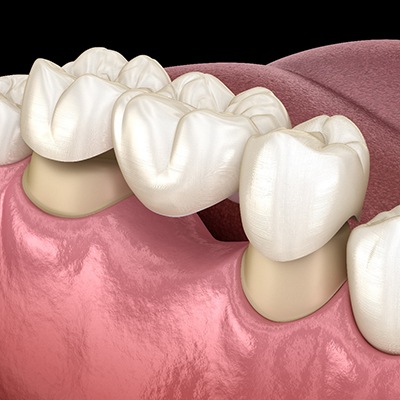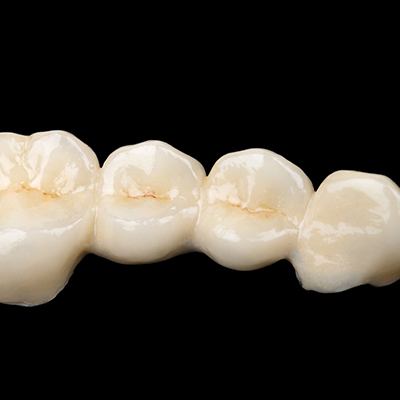

One day you may have a full smile, and the next you could get hit in the mouth and end up with a missing tooth. The empty space could make ordinary tasks like eating and speaking harder, and your oral health is likely to suffer due to your grin being incomplete. Fortunately, there are several ways for a missing tooth to be replaced, with a dental bridge being a reliable option that has stood the test of time. Call today to set up a consultation with Dr. Arakelian to see if you might be a good candidate for a dental bridge.


To create a dental bridge, a pair of dental crowns are combined with prosthetic teeth called pontics. (The exact number of pontics can vary; sometimes only one is required, but in other cases, two or more might be used.) The crowns are at both ends of the restoration while the pontics are in the middle. The crowns of the bridge are anchored to either natural teeth or dental implant posts. This allows the pontics to fill in the space in your smile and act as your new teeth.

A dental bridge can either be placed by traditional means or attached to dental implants. Both methods have benefits to consider, and one might be a more viable option than the other depending on how many teeth are missing and what your oral health is currently like. Our knowledgeable, caring team can help you pick the type of bridge that works best for you.
Getting a traditional bridge means having a bit of enamel taken off the two teeth next to the gap. We can place a traditional bridge if you have at least one tooth that’s missing. Before we move forward with the process, we’ll need to confirm that the remaining teeth are in good enough shape to support a restoration.
Two dental implants can be placed in predetermined parts of the jawbone to act as prosthetic roots for your dental bridge. Since there needs to be enough room for the posts, an implant bridge is normally recommended when three or more consecutive teeth have been lost. Keep in mind that it normally takes months for the implants to form a strong bond with the jawbone, so it might be a while until you receive your dental bridge.

Your remaining teeth may start to drift out of alignment when there’s empty space in your smile, but a dental bridge can prevent this from happening. Furthermore, your bridge will be as natural-looking as it is functional thanks to the durable tooth-colored materials that it’s made of. It’s not too difficult to take care of dental bridges since they simply need to be brushed the way regular teeth do; as long as you keep this type of maintenance up, your restoration will likely last for more than a decade.